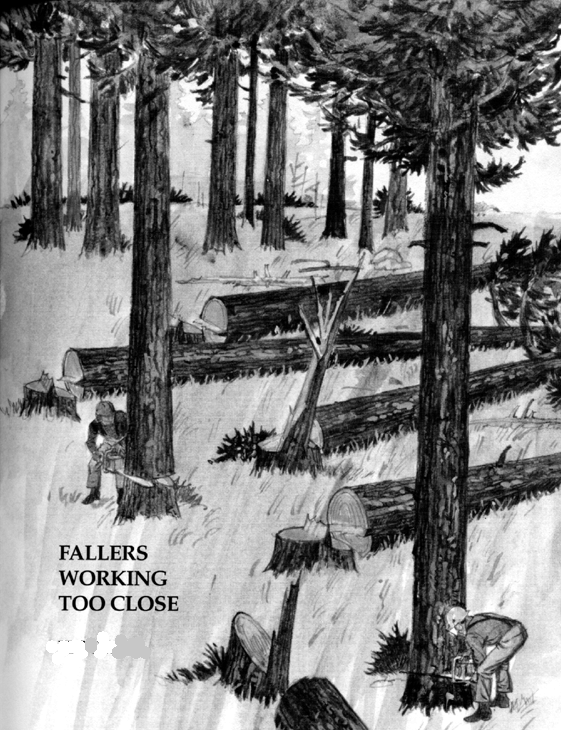|
 |
A tree harvesting plan
should be developed to address the hazards associated with a specific logging site.
Hazards to consider in developing the plan include:
- Overhead hazards including electric lines (29 CFR 1910.333(c)(3))
- Danger Trees including Stubs,
Spring Poles,
Wind Blowns and
Widow Makers
- General Environmental and Working Conditions
- Adequate separation of operations while maintaining visual or audible contact
|
What are the general safe practice requirements?
- Employees must be spaced and the duties of each employee must be organized so the
actions of one employee will not create a hazard for any other employee.
- Assess for and limit hazards associated with electrical storms, strong winds which may
affect the fall of a tree, heavy rain or snow, extreme cold, dense fog, fires, mudslides,
and darkness.
- Trees must be felled in a manner that does not create a hazard to
employees ( i.e. work areas must be assigned so that trees cannot fall into an
adjacent occupied work area).
- Generally, employees must not approach a feller or mechanical felling operation any
closer than 2 tree-lengths of the trees being felled, until the feller or felling machine
operator has acknowledged that it is safe to do so.
- Felling must be done uphill from or on the same level as previously felled trees. This
will limit the hazards associated with the rolling or sliding of logs or trees.
- Each employee performing a logging operation at a logging work site must work in a
position or location that is within visual or audible contact with another employee.
- The employer must account for each employee at the end of each workshift.
What precautions must be taken when "danger trees" are in the felling area?
- Each danger tree must be felled or removed using mechanical or other techniques to
minimize employee exposure before work is begun in the area of the danger tree.
- Before felling or removing a danger tree, loose bark and damage must be removed or held
in place.
- If the danger tree cannot be felled or removed, it must be marked and there shall be no
work allowed within 2 tree-lengths of it, unless the employer demonstrates that a shorter
distance will not create a hazard for an employee.
- When cutting a spring pole or other trees under stress, no employee other than the
feller must be within 2 tree-lengths of the tree when the stress is released.
 Additional Developing a Tree Harvesting Plan information:
Additional Developing a Tree Harvesting Plan information:
 Additional Related information:
Additional Related information:
|

